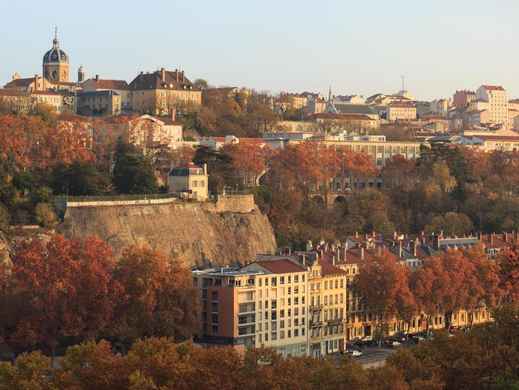


Rhone-Alpes
Europe
/
France
/
Rhône-Alpes
Nestled in the southeast of France, the Rhône-Alpes region is a breathtaking mosaic of soaring Alpine peaks, verdant valleys, and pristine lakes. With distinct seasonal variations, the area offers snow-covered winters perfect for skiing, while summers bring pleasant temperatures ideal for hiking and water activities. The climate varies from Alpine cold in higher elevations to Mediterranean warmth in southern areas, making it a year-round destination.
The lifestyle here beautifully balances French sophistication with Alpine practicality. Locals embrace a love for outdoor adventure while maintaining deep connections to their gastronomic heritage. The region's proximity to Switzerland and Italy has created a unique cultural blend that manifests in architecture, cuisine, and daily rhythms that value both work and leisure. Villages often observe the traditional two-hour lunch break, with shops closing to honor mealtime as a sacred part of the day.
What makes Rhône-Alpes truly special is its remarkable diversity packed into a relatively compact region. Within hours, you can journey from the cosmopolitan energy of Lyon to the serene beauty of Lake Annecy, or from world-class ski resorts like Chamonix to the lavender-scented landscapes of Ardèche. This geographic variety is matched by culinary richness—the region boasts over 20 Michelin-starred restaurants and is the birthplace of legendary French chefs like Paul Bocuse.
Food lovers will delight in the region's signature dishes, including raclette and fondue in Alpine areas, quenelle (fish dumplings) in Lyon, and the rustic potato gratin dauphinois. Don't miss local cheeses like Reblochon, Beaufort, and Tome de Savoie, best enjoyed with regional wines from Côtes du Rhône or Savoie vineyards. For a unique food experience, visit Lyon's historic ""bouchons""—traditional restaurants serving authentic Lyonnaise cuisine in a convivial atmosphere.
Among countless attractions, Annecy stands out as the ""Venice of the Alps,"" with its crystal-clear lake and canal-laced old town. The Mont Blanc massif offers world-renowned hiking and skiing, with the iconic Aiguille du Midi cable car providing breathtaking panoramic views from 3,842 meters. Meanwhile, Lyon's remarkably preserved Renaissance district, Vieux Lyon, offers a journey through time with its hidden passageways (traboules) connecting ancient courtyards and buildings—a perfect setting to understand how this region has been shaping European culture for centuries.

Get to Know Rhone-Alpes
Take a tour of this destination's highlights

Travel Tips for Rhone-Alpes
What you need to know before traveling here
Getting Around Rhone-Alpes
A guide to Rhone-Alpes's local transportation
The TER (Transport Express Régional) network is extensive throughout Rhône-Alpes, connecting major cities like Lyon, Grenoble, Annecy, and Chambéry with smaller towns. Purchase tickets at station counters or machines, or use the SNCF Connect app for mobile tickets. A money-saving tip: look for ""Illico"" discount cards if you're staying for an extended period. Trains can get crowded during ski season weekends, so book in advance if traveling to resort towns like Chamonix.
Practical Tips for Rhone-Alpes
Things to prepare and best way to visit
The Rhônexpress tram connects the airport directly to Lyon Part-Dieu train station in about 30 minutes, running every 15 minutes. A one-way ticket costs approximately €16.10 (cheaper if purchased online in advance). Alternatively, taxi services and ride-sharing options are available, costing around €50-60 to the city center.
Service is typically included in your bill (look for ""service compris""). While tipping isn't expected, it's common to round up the bill or leave small change for good service. For exceptional service, leaving 5-10% is appreciated but not required. In cafés, leaving the small change from your coffee is a common practice.
Each season offers distinct experiences. Winter (December-March) is ideal for skiing and winter sports. Spring (April-June) brings wildflowers and fewer crowds. Summer (July-August) offers perfect hiking weather and vibrant festivals, though popular destinations like Annecy can get crowded. Fall (September-November) features beautiful foliage, wine harvests, and pleasant temperatures for exploring.
While English is spoken in tourist areas, hotels, and many restaurants, learning basic French phrases will greatly enhance your experience, especially in smaller towns and rural areas. Locals appreciate visitors who make an effort to speak their language, even just for greetings and simple interactions. Translation apps can be helpful for more complex conversations.
Seek out farmer's markets held weekly in most towns for local products. Try traditional ""bouchons"" in Lyon for classic Lyonnaise dishes, or mountain restaurants (""fermes-auberges"") that serve farm-to-table Alpine specialties. Wine enthusiasts should visit the Côtes du Rhône vineyards for tastings, while cheese lovers can follow the ""Route des Fromages"" in Savoie to visit artisanal cheese producers.
See All Practical Tips for Rhone-Alpes

Explore Rhone-Alpes
Create your itinerary with our top picks below

Get to Know Rhone-Alpes

Travel Tips for Rhone-Alpes

Explore Rhone-Alpes
More Destination Near Rhone-Alpes



































 Facebook
Facebook Instagram
Instagram TikTok
TikTok Youtube
Youtube Telegram
Telegram
